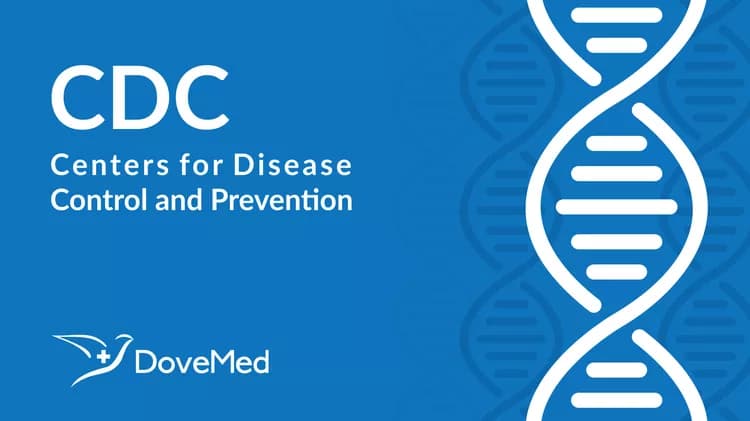
Rural Americans Are Dying More Frequently From Preventable Causes Than Their Urban Counterparts
Potentially preventable deaths from the five leading causes of death occurred more often among people in the most rural counties than in the most urban counties during 2010–2017, according to a new study released today in CDC’s Morbidity and Mortality Weekly Report.
The gap in the percentages of preventable deaths between rural and urban counties widened over the eight-year study period for deaths from cancer, heart disease, and chronic lower respiratory disease. This rural/urban gap remained relatively stable for stroke and decreased for unintentional injuries. However, the decrease in the gap for preventable deaths from unintentional injuries wasn’t due to improvements in rural counties but to the sharp rise in urban areas, due in large part to the opioid crisis.
The study also found that while potentially preventable cancer deaths fell to less than 10% of all cancer deaths in 2017, more than half of deaths due to unintentional injury were potentially preventable. Percentages of preventable deaths were generally higher in the southeastern United States for most causes than in other regions.
“We are encouraged to find that preventable deaths from cancer have gone down overall, yet there is a persistent and striking gap between rural and urban Americans for this and other leading causes of death,” said CDC Director Robert R. Redfield, M.D. “There are proven strategies for reducing health risks like cigarette smoking and obesity and we need to redouble our prevention efforts to reach those living in rural areas, where risks tend to be higher.”
CDC researchers used mortality data from the National Vital Statistics System to calculate potentially preventable deaths for the five leading causes of death among people under 80 years old.
Previous studies placed counties into two categories — urban or rural — but this new study breaks counties down further into six categories: large central metropolitan (the most urban), large fringe metropolitan, medium metropolitan, small metropolitan, micropolitan, and noncore (the most rural). This gave the researchers a more detailed look at health differences among these communities.
Main findings
In 2010, 28.7% of deaths from cancer in the most rural counties were potentially preventable, compared with 17.9% in the most urban counties. By 2017, 21.7% of cancer deaths in the most rural counties were potentially preventable, compared with 3.2% in the most urban counties.
In 2010, 45.1% of deaths from heart disease in the most rural counties were potentially preventable, compared with 24.1% in large fringe metropolitan areas. By 2017, 44.9% of deaths from heart disease in the most rural counties were potentially preventable, compared with 18.5% in large fringe metropolitan areas.
In 2010, 60.9% of deaths from unintentional injury in the most rural counties were potentially preventable, compared with 25.4% in the most urban counties. By 2017, 64.1% of deaths from unintentional injury in the most rural counties were potentially preventable, compared with 47.8% in the most urban counties.
In 2010, 54.3% of deaths from chronic lower respiratory disease (such as COPD) in the most rural counties were potentially preventable, compared with 23.4% in the most urban counties. By 2017, 57.1% of deaths from chronic lower respiratory disease in the most rural counties were potentially preventable, compared with 13% in the most urban counties.
In 2010, 41.6% of deaths from stroke in the most rural counties were potentially preventable, compared with 22.7% in large fringe metropolitan areas. By 2017, 37.8% of deaths from stroke in the most rural counties were potentially preventable, compared with 17% large fringe metropolitan areas.
How to reduce deadly health risks in rural America
More than 46 million Americans live in rural areas, and these residents tend to be older and sicker than those living in urban areas. Rural Americans tend to have higher rates of cigarette smoking, high blood pressure, and obesity, and to report less leisure-time physical activity and lower seatbelt use than their urban counterparts. They also have higher rates of poverty, less access to healthcare, and are less likely to have health insurance.
To help reduce the greater frequency of preventable deaths among rural Americans, healthcare providers in rural areas and public health programs can:
Screen patients for high blood pressure and make blood-pressure control a quality improvement goal. High blood pressure is a leading risk factor for heart disease and stroke.
Increase cancer prevention and early detection. Rural healthcare providers should participate in the state-level comprehensive control coalitions. Comprehensive cancer control programs focus on cancer prevention, education, screening, access to care, support for cancer survivors, and overall good health.
Encourage physical activity and healthy eating to reduce obesity. Obesity is linked to a variety of serious chronic illnesses, including diabetes, heart disease, cancer, and arthritis.
Promote smoking cessation. Cigarette smoking is the leading cause of preventable disease and death in the United States and is the most significant risk factor for chronic lower respiratory disease.
Promote motor vehicle safety. Rural healthcare providers should encourage patients to always wear a seat belt and should counsel parents and child care providers to use age- and size-appropriate car seats, booster seats, and seat belts on every trip.
Engage in safer prescribing of opioids for pain. Healthcare providers should follow the CDC guideline when prescribing opioids for chronic pain and educate patients on the risks and benefits of opioids and using nonpharmacologic therapies to provide greater benefit.
To read the full report: https://www.cdc.gov/mmwr/volumes/68/ss/ss6810a1.htm?s_cid=ss6810a1_w.
For interactive graphics, including state-specific data: https://tabsoft.co/2BxWUg0
external icon
.
For more information on rural health: https://www.cdc.gov/ruralhealth.
###
U.S. DEPARTMENT OF HEALTH AND HUMAN SERVICES
Related Articles
Test Your Knowledge
Asked by users
Related Centers
Related Specialties
Related Physicians
Related Procedures
Related Resources
Join DoveHubs
and connect with fellow professionals

0 Comments
Please log in to post a comment.